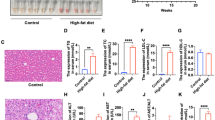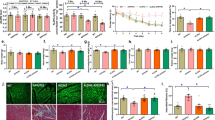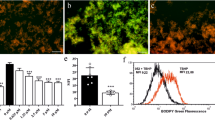Abstract
For quantitative evaluation of lipid peroxidation after perinatal hypoxia in umbilical arterial cord blood samples from 109 healthy, acidotic, and asphyctic neonates with a gestational age ranging from 26 to 41 wk, the levels of aldehydic lipid peroxidation products malondialdehyde (MDA) and 4-hydroxynon-2-enal (HNE) were measured. Furthermore, the concentrations of oxidized and reduced glutathione (GSSH and GSH) and the purine compounds hypoxanthine and uric acid were determined. With increasing gestational age MDA and HNE levels increased. Furthermore, an increased level of GSH was also found. After perinatal hypoxia the concentrations of MDA and HNE rose distinctly (p < 0.001), reflecting sensitively the extent ofin vivo lipid peroxidation. HNE is proposed to be a new parameter for quantitative evaluation of posthypoxic cellular damage in the perinatal period. HNE is a more specific parameter for estimation of lipid peroxidation processes in comparison with MDA. Additionally, HNE is cytotoxic and mutagenic at nanomolar concentrations. The increased levels of both MDA and HNE were accompanied by a strong decrease of GSH concentrations (p < 0.001), indicating the rapid consumption of GSH via a glutathione peroxidase reaction but additionally the high reactivity of HNE with sulfhydryl groups. During oxygen deficiency, increased levels of hypoxanthine (p < 0.01) and uric acid (p < 0.05) were due to the accelerated degradation of purine nucleotides. The rate of purine degradation including xanthine oxidase reactions characterizes the extent of an important radical source during oxygen deficiency, contributing to peroxidation of polyunsaturated fatty acids and the formation of secondary aldehydic lipid peroxidation products.
Similar content being viewed by others
Log in or create a free account to read this content
Gain free access to this article, as well as selected content from this journal and more on nature.com
or
Abbreviations
- GSSG:
-
oxidized glutathione
- GSH:
-
reduced glutathione
- HNE:
-
4-hydroxynon-2-enal
- MDA:
-
malondialdehyde
References
Esterbauer H 1985 Lipid peroxidation products: formation, chemical properties and biological activities. In: Poli G, Cheeseman KH, Dianzani MU, Slater TF (eds) Free Radicals in Liver Injury. IRI Press, Oxford, pp 29–47
Dianzani MU 1986 Biochemical effects of saturated and unsaturated aldehydes. In: McBrien DHC, Slater TF (eds) Free Radicals, Lipid Peroxidation and Cancer. Academic Press, London, pp 129–158
Benedetti A, Comporti M 1987 Formation, reactions and toxicity of aldehydes produced in the course of lipid peroxidation in cellular membranes. Bioelectrochem Bioenerg 18: 187–202
Esterbauer H, Schaur RJ, Zollner H 1991 Chemistry and biochemistry of 4-hydroxynonenal, malondialdehyde and related aldehydes. J Free Radicals Biol Med 11: 81–128
Esterbauer H, Zollner H, Schaur RJ 1988 Hydroxyalkenales: cytotoxic products of lipid peroxidation. ISI Atlas Sci Biochem 1: 31–317
Eckl P, Esterbauer H 1990 Genotoxic effects of 4-hydroxyalkenals. Adv Biosci 76: 141–157
Wong SHJ, Knight JA, Hopfer SM, Zaharia O, Leach CN, Sunderman FW 1987 Lipoperoxides in plasma as measured by liquid-chromatographic separation of malondialdehyde-thiobarbituric acid adduct. Clin Chem 33: 214–220
Grune T, Siems W, Esterbauer H 1992 Comparison of different assays for malondialdehyde using thiobarbituric acid. Fresenius J Anal Chem 343: 135
Sommerburg O, Grune T, Klee S, Ungemach FR, Siems WG 1993 Formation of 4-hydroxynonenal and further aldehydic mediators of inflammation during bromotrichloromethane treatment of rat liver cells. Mediat Inflamm 2: 27–31
Beutler E, Duron O, Kelly BM 1963 Improved method for the determination of blood glutathione. J Lab Clin Med 61: 882–888
Hissin PJ, Hilf R 1976 A fluorometric method for determination of oxidized and reduced glutathione in tissues. Anal Biochem 74: 214–226
Grune T, Ross GA, Schmidt H, Siems W, Perrett D 1993 Optimized separation of purine bases and nucleosides in human cord plasma by capillary zone electrophoresis. J Chromatogr 636: 105–111
Hamosh M 1987 Lipid metabolism in premature infants. Biol Neonate 52: 50–64
Smith CV, Hansen TN, Martin NE, McMicken HW, Elliott SJ 1993 Oxidant stress responses in premature infants during exposure to hyperoxia. Pediatr Res 34: 360–365
Glöckner R, Kretzschmar M 1991 Perinatal glutathione levels in liver and brain of rats from large and small litters. Biol Neonate 59: 287–293
Serafini MT, Arola L, Romeu A 1991 Glutathione and related enzyme activity in the 11-day rat embryo, placenta and perinatal rat liver. Biol Neonate 60: 236–242
Ripalda MJ, Rudolph N, Wong SL 1989 Developmental patterns of antioxidant defense mechanisms in human erythrocytes. Pediatr Res 26: 366–369
Thiringer K 1983 Cord plasma hypoxanthine as a measure of foetal asphyxia. Acta Paediatr Scand 72: 231–237
Saugstad OD, Gluck L 1982 Plasma hypoxanthine levels in newborn infants: a specific indicator of hypoxia. J Perinat Med 10: 266–272
O'Connor MC, Harkness RA, Simmonds RJ, Hytten FE 1981 The measurement of hypoxanthine, xanthine, inosine and uridine in umbilical cord blood and fetal scalp blood samples as a measure of fetal hypoxia. Br J Obstet Gynaecol 88: 381–390
Lipp-Zwahlen AE, Tuchscmid P, Silberschmidt M, Duc G 1983 Arterial cord blood hypoxanthine: a measure of intrauterine hypoxia?. Biol Neonate 44: 193–202
Gerber G, Siems W, Werner A 1991 Purine nucleotide degradation and free radical generation in the hypoxic liver. In: Vogo-Pelfrey C (ed) Membrane Lipid Peroxidation, Vol III. CRC Press, Boca Raton, FL
Saugstad OD 1990 Oxygen toxicity in the neonatal period. Acta Paediatr Scand 79: 881–892
Author information
Authors and Affiliations
Additional information
Supported by the Bundesministerium für Forschung und Technologie, Bonn, Federal Republic of Germany.
Rights and permissions
About this article
Cite this article
Schmidt, H., Grune, T., Müller, R. et al. Increased Levels of Lipid Peroxidation Products Malondialdehyde and 4-Hydroxynonenal after Perinatal Hypoxia. Pediatr Res 40, 15–20 (1996). https://doi.org/10.1203/00006450-199607000-00003
Received:
Accepted:
Issue date:
DOI: https://doi.org/10.1203/00006450-199607000-00003
This article is cited by
-
Relationship between red blood cell aggregation and dextran molecular mass
Scientific Reports (2022)
-
Free radicals and neonatal encephalopathy: mechanisms of injury, biomarkers, and antioxidant treatment perspectives
Pediatric Research (2020)
-
Plumbagin, a vitamin K3 analogue ameliorate malaria pathogenesis by inhibiting oxidative stress and inflammation
Inflammopharmacology (2018)
-
Usefulness of serum lipid peroxide as a diagnostic test for hypoxic ischemic encephalopathy in the full-term neonate
Journal of Perinatology (2013)
-
Effect of mode of birth on purine and malondialdehyde in umbilical arterial plasma in normal term newborns
Journal of Perinatology (2008)



